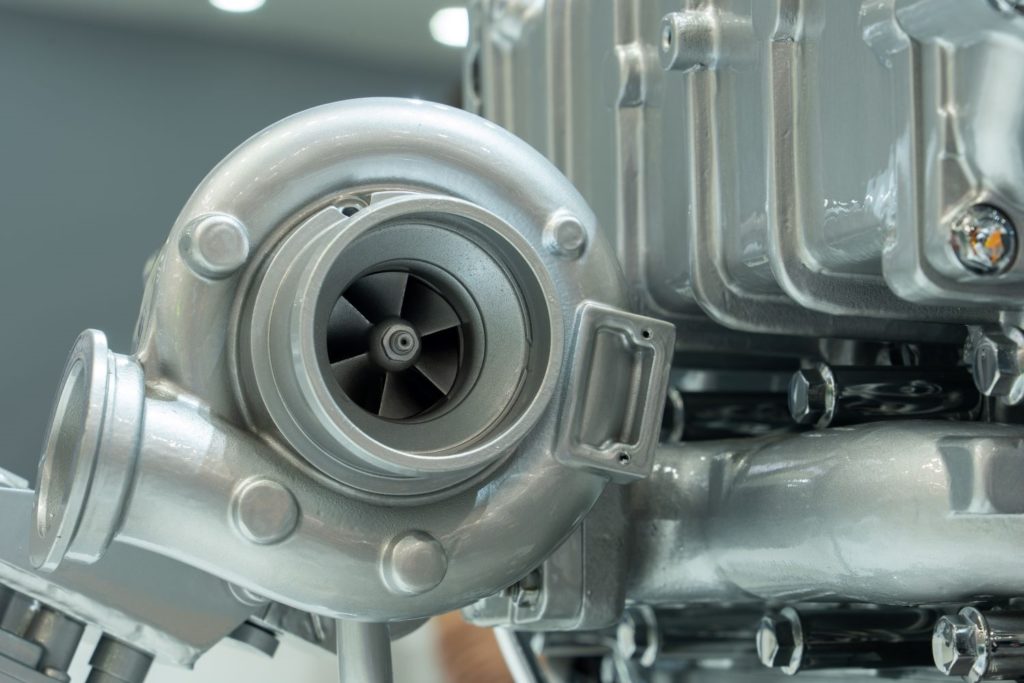This guide will help you learn more about the P0236 code, what it means, its possible causes, and common symptoms.
What Does the P0236 Code Mean?
Diagnostic trouble code (DTC) P0236 stands for “Turbocharger/Supercharger Boost Sensor “A” Circuit.” This code sets when the powertrain control module (PCM) detects a signal from the boost pressure sensor that does not meet the expected values.
In non-turbo engines, the downward motion of the pistons during the intake stroke creates a vacuum in the intake manifold. This vacuum is what draws the air-fuel mixture into the combustion chamber.
The turbocharger is a pump that’s powered by exhaust gases that are leaving the combustion chamber. As a result, compression and power increase in what’s known as boost pressure. The boost pressure sensor tells the PCM how much boost is created by the turbocharger. If the PCM detects a signal from the boost pressure sensor that doesn’t match the expected values, the P0236 code sets.

For more technical information that can help you better understand P0236, especially if you want to attempt a DIY fix, read our in-depth discussion about turbochargers and superchargers.
Note: The definition of code P0236 may be different depending on the vehicle manufacturer. Consult the appropriate repair manual or repair database for the exact code definition.

What are the Common Causes of the P0236 Code?
Like several other trouble codes, the P0236 code has several possible causes, some of which are listed below:
- Brake booster pressure sensor failure
- Turbocharger or supercharger failure
- Pinched, collapsed, or damaged vacuum lines
- Exhaust leak
- Wiring issue
- Defective control solenoid
- Defective PCM

What are the Common Symptoms of the P0236 Code?
Below are some of the most common symptoms of the OBD-II code P0236:
- Illuminated malfunction indicator lamp (MIL) or check engine light
- Decreased engine performance
- Increased fuel consumption
- Lack of boost from turbocharger or supercharger
How to Diagnose the P0236 Code
When you encounter a trouble code like the P0236, the first thing you have to do is to determine the root cause of the issue. Trouble codes have several possible causes, and the P0236 is no exception. Troubleshooting may be difficult, especially if you have no experience in dealing with OBD-II codes. Because of that, you may need a certified mechanic or technician to do the job for you.
But if you want to know more about the P0236 code, there are a lot of helpful resources that explain the diagnostic and repair processes in more detail.
The video below should give you an idea of how the diagnostic procedure goes:
How to Fix the P0236 Code
While many trouble codes share the same affected areas, common symptoms, and possible causes, it doesn’t mean that there’s a single solution to all of them. Before you can fix the P0236 code, you need to find out the root cause of the issue and figure out the prescribed repair procedure for your specific vehicle.
Luckily, there are a few auto repair resources and guides that you can use to learn more about trouble codes and how to fix them. Vehicle-specific repair manuals are the most reliable sources, because they contain detailed information and step-by-step guides. They also have helpful illustrations and diagrams, so you can understand the problem easier.
Just note that if you’re not familiar with OBD-II code repairs, it may be best to have a professional do the job for you, so you can avoid mistakes and expensive repair bills down the line.
Other Notes About P0236
Driving with the P0236 code is not advised because of the increased risk of over boost and catalytic converter damage. If you encounter this code, it’s recommended that you bring your vehicle to a repair shop for diagnosis and repair as soon as possible.
Shopping for Replacement Parts to Clear Code P0236
One of the easiest and most effective ways to fix DTC P0236 is to repair or replace faulty parts. Typically, these parts will be the brake booster pressure sensor, the turbocharger or supercharger, or the vacuum lines. Fortunately, finding replacement parts that are compatible with your vehicle is easy with the help of CarParts.com.
We source our auto parts from top manufacturers. Each component is carefully vetted by industry experts to ensure they’re built to last. You won’t have to worry about your replacement parts malfunctioning or failing shortly after obtaining them.
You won’t even have to take one step outside your home to get your hands on new parts for your ride. Our distribution centers are strategically located across the US to ensure fast and efficient shipping. Expect to receive your order in as fast as two business days.
To get started, download our mobile app or visit our website. Fill out our vehicle selector and use the search filters to shop according to your preferred brand, price range, and features. This way, you can easily find parts designed to work with your vehicle.
Don’t let DTC P0236 develop into an even bigger problem. Browse our catalog and order replacement parts now!
Any information provided on this Website is for informational purposes only and is not intended to replace consultation with a professional mechanic. The accuracy and timeliness of the information may change from the time of publication.

















